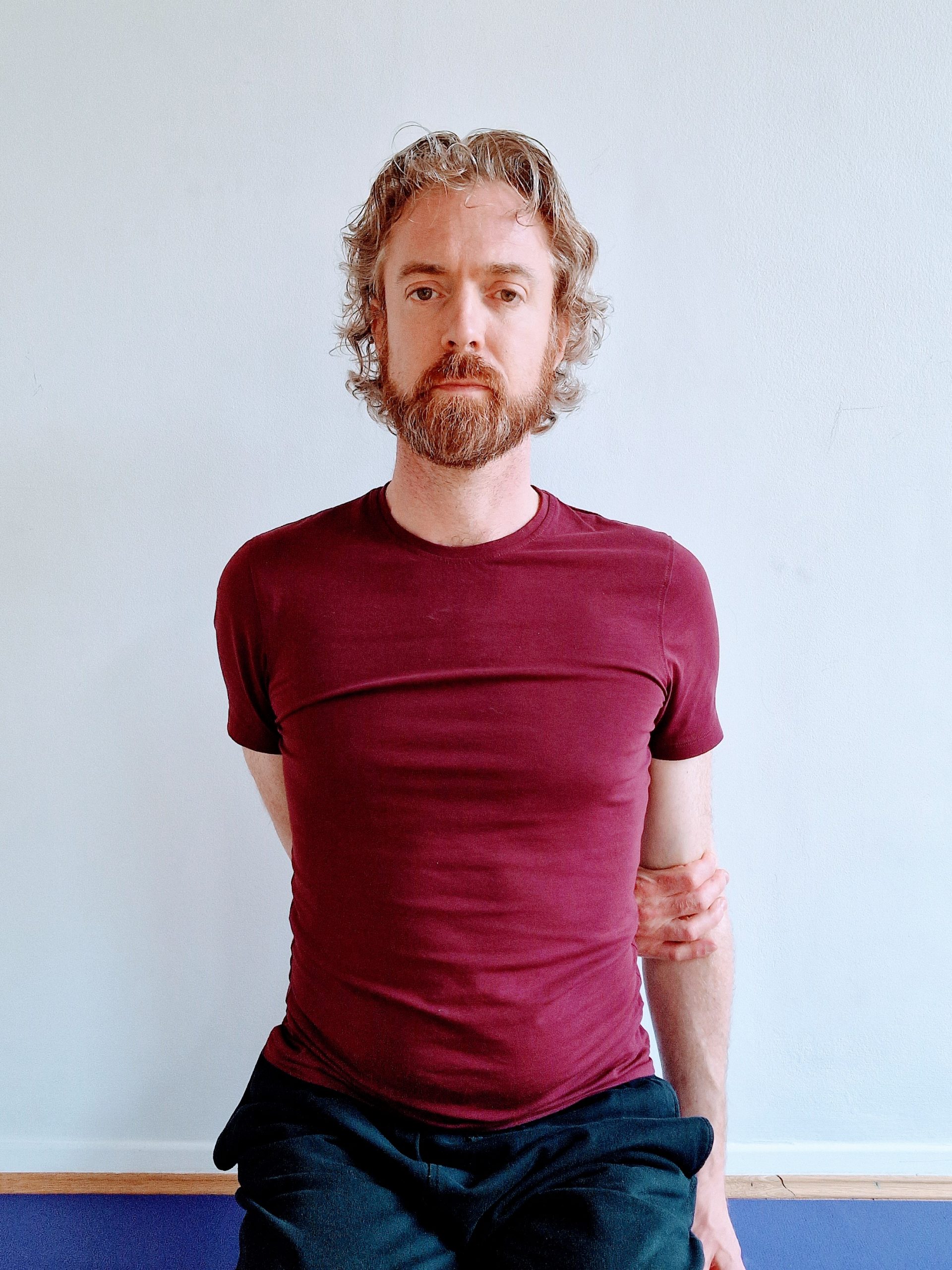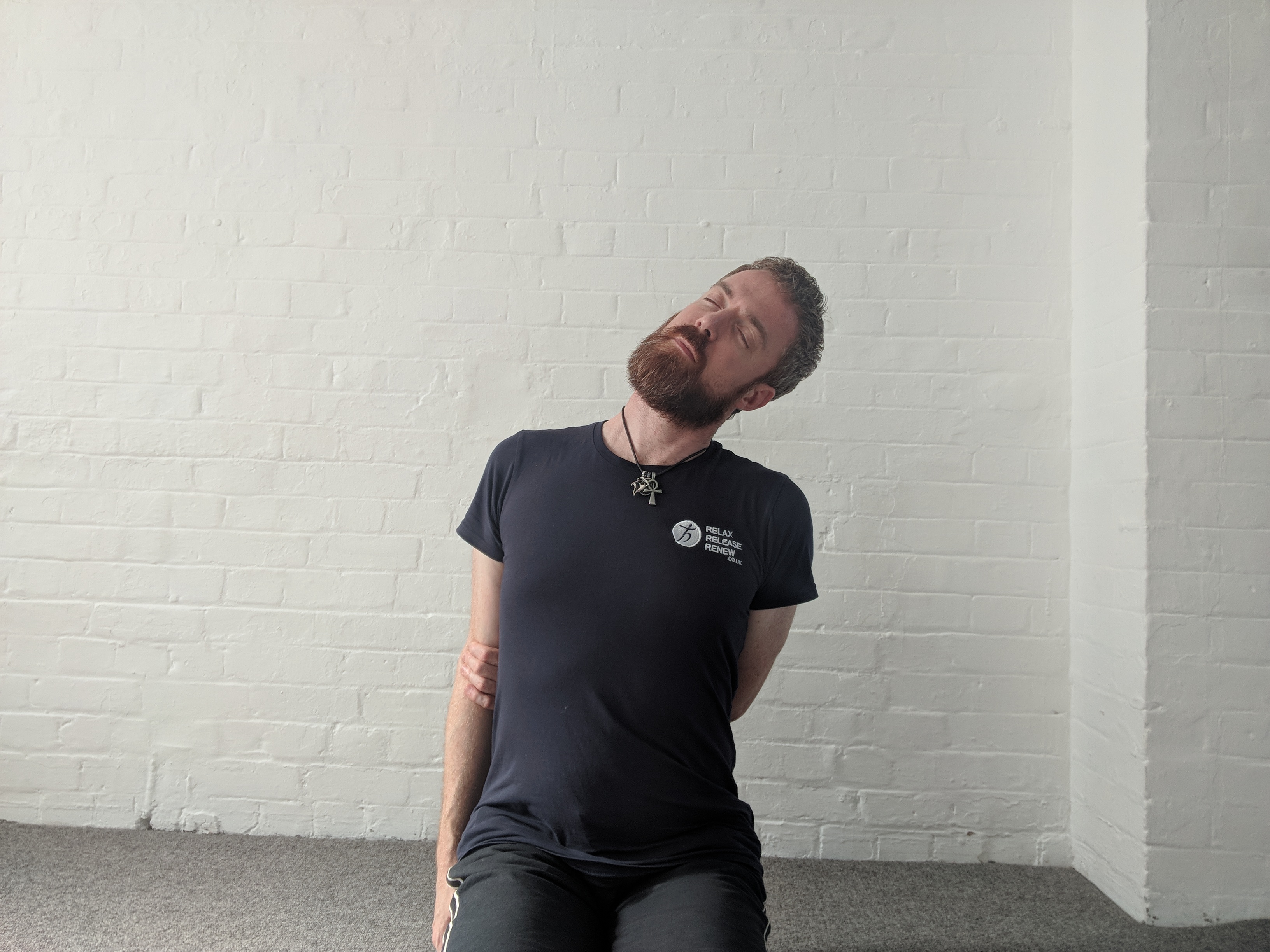They can get tight and short, so the shoulders sit higher than might be called neutral. This is partly because one of our responses to a stimulus (like a firework unexpectedly going off) is to try to curl up into the foetal position, where the knees come up towards the chest and the shoulders come up towards the ears so we protect the softer parts (which the upper traps help with). We rarely actually bring our knees up to our chests, but our shoulders do hunch up. They can get very used to being in this position, and they ache a bit when we let the shoulders hang down in their normal position, so we hold them up a bit higher and this continues until it can almost seem as if we end up wearing our shoulders attached to our ears!
To get the muslces to lengthen again is a fairly common sense stretch, which I’ve detailed below, but with a couple of pointers to try to minimise short cuts and “cheats” we can find to make it easier. Please note that if this causes sharp, painful sensations in the neck, shoulder or arm, that is the body telling you somethings wrong, so please stop and get someone to investigate what is going on. A gentle stretch that eases is ok.
Equipment
None necessary
Steps
- Choose which shoulder you want to do first.
- Stabilise this shoulder by either holding it with the other hand, or hold the chair you’re sitting on, or hold a weight in that hand (like a shopping bag). If you don’t and you are really tight the shoulder will just come with your head as you take it to the side.
- Keeping your face pointing forwards, take the opposite ear towards the other shoulder in a side bend of the neck. If this creates a sharp pain then stop the stretch.
- Spend approximately 30 seconds in this position, trying to allow the side of the neck that is being stretched to soften and lengthen.
- Ease off the stabilisation of the shoulder and bring your head back to neutral, using your hand to help if necessary.
- Repeat on the other side.
NB. These stretches are not meant to create additional pain in your neck, or an increasing level of discomfort. If you experience this then please stop the stretch and seek advice.





Adaptations
A – If your neck is comfortable in the position of Step 3 above, and you are not using the other hand to stabilise the shoulder being stretched, then you can reach up and place your palm on the head and use the weight of your arm to add an additional stretch
B – If your neck is comfortable in the side stretch, you can add in a slight rotation after step 4 above. From the extreme side position then slowly rotate your head back towards the shoulder that is being stretched. You do not need to turn very far, think about the nose moving approximately 2-3 cms. This rotation adds in the anterior fibres of the Upper trapezius muscles. Hold it again for approximately 30 seconds.
People often do this naturally to release some of the neck tension they can hold. Yep, it’s a perfectly normal motion, I’m just suggesting that it might be done in a more considered way.
Video
Here’s a video of me talking your through the stretch.
Tim


